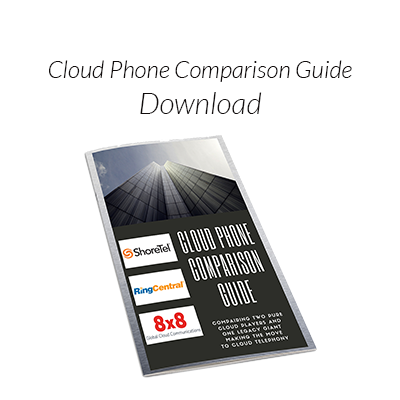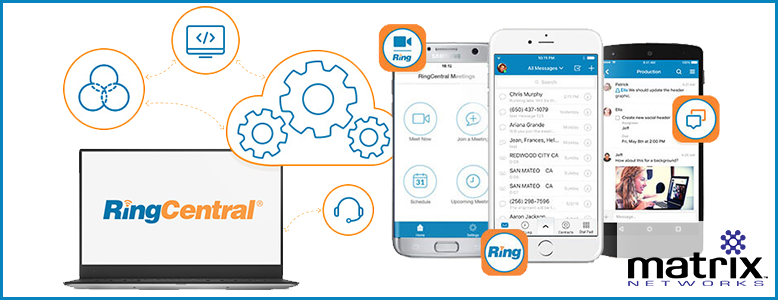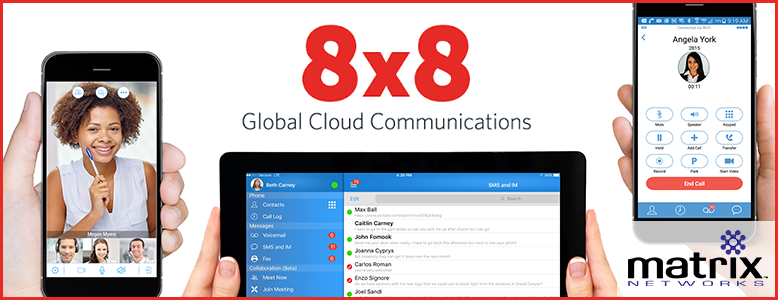
So you hate your new phone system, huh? Well, you are not alone. As more and more businesses migrate from legacy technology to more modern, robust solutions, frustrations are bound to come up. Change is never easy.
There are typically three stakeholders involved in replacing a phone system. There is the IT team or person: responsible for evaluating the multitude of options, convincing the decision maker they have made the right choice, implementing the chosen solution, ensuring user adoption, and maintaining the system. Then there are the employees. They get to use all the fancy new features but are often left to their own devices to figure out how… Lastly, there are the business owners or C-level executives who are in charge of evaluating the impact of a new phone system, both financially and in regards to their workforce, and more likely than not, approving the purchase. Let’s be honest, nobody wants to replace their phone system, but when you consider the impact of your old system crashing, and what that means from a revenue perspective, the conversation is unavoidable…
Ok, now that the stage is set, let’s peel back the layers – you already have the new system, so there is no sense crying over spilt milk. Here are a few tips and tricks to help you survive and make the most of your new phone system.
Surviving Your New Phone System for "End Users"
Quick side note: do employees outside of the tech industry know that folks in the IT space call them “end users”? That is the people who actually use the technology implemented by the IT team. It seems to me to be a fairly cold and seemingly unnecessarily accurate way of labeling people. I mean you wouldn’t expect all chefs to call guests at their restaurants “food eaters” would you? IT professionals are naturally realists; they are critical thinkers who tend not to sugarcoat much of anything. Implementing a new phone system is no different. You, as an “end user,” will be expected to know all the tricks and troubleshooting techniques from the moment that new handset is placed on your desk and the cutover has been made. Here are a few ways to ensure you get the most out of your new collaboration platform (notice I didn’t say phone system).
- You no longer need to use your actual phone! Modern Cloud Phone Systems come with desktop clients associated with your user profile. This is software that is installed on your PC and allows you to control your phone through your computer. What about the handset? Well, you can use it if you’d like, but a Bluetooth paired with your PC stops being a luxury and becomes a necessity once you get used to it. Think of all the multi-tasking! For an example of what a desktop client looks and feels like visit our ShoreTel (Mitel) training video page.
- Your new system is so much more than voice and voicemail (hence collaboration platform). While you used to see your old phone system as a bodyguard protecting you from unwanted sales calls, and a place to store those messages you probably never checked, your new system will allow you to communicate both internally and externally in unimaginable ways! Instant messaging and video conferencing are just the tip of the iceberg. Modern phone systems allow you to integrate with collaboration platforms like Slack and GLIP for a streamlined project collaboration experience. Integrations may also extend to your email client or CRM, giving you the ability to call a contact directly from Google or have screen pop functionality that automatically directs you to your customer's CRM information when they call in for service. For more on capabilities like this check out our article 3 ways to leverage UC.
- Vendors are a great source for information and training. See that logo on the aforementioned desktop client? That is the “vendor” and if you Google that name you will most likely find a plethora of training material on how to use your new phone system. Warning: don’t fall into the trap of thinking the new shiny phone on your desk is your “phone system”. Most modern (cloud based) phone systems are providing a software service (aka, the desktop client), not necessarily manufacturing the hardware.
- Provide feedback! A business owner's worst nightmare is to invest in a new phone system only to find out his or her employees aren’t using it. Now that your leadership team has finally pulled the trigger on something that plagued their consciousness for, I assure you, quite some time, do them a solid and submit feedback. No matter if your feedback is positive or negative, there is most likely is a solution for your problem or a new way to use your new system that you simply haven’t uncovered yet.

Surviving Your New Phone System for Business Owners
If you are a business owner, or C-level executive who has recently implemented a new Cloud Phone System and are having trouble with user adoption or quality of experience, never fret. Here are a few suggestions that might very well right the ship and carry you on to calmer waters.
- Involve Network Experts!!!
Being a phone service provider is not the same as being a network specialist. Modern phone systems require an entirely new approach to managing flow of traffic across your network. Your old phone system ran over a different path than your Internet does. That path is called the PSTN (public switching telephone network). The old system works by setting up a dedicated channel (or circuit) between two end points. These traditional systems are based on copper wires carrying analog voice data over the dedicated circuits. In contrast, Cloud Phone Systems operate using digital technology called VoIP (voice over Internet protocol). VoIP, unlike PSTN, delivers voice through a series of packets. Using a VoIP phone system, the voice information travels to its destination in countless individual packets across the Internet. This type of communication presents challenges because the Internet wasn't really designed for this kind of real-time communication.
True network professionals will help you identify problem areas within your network and apply additional technology that will optimize your network for “bandwidth sensitive” applications like voice. For more information on optimizing your network for a modern, digital business environment: click here. - Survey your employees and brainstorm with your key stakeholders. Best practice is to engage your stakeholders long before you select a phone system. However, if that didn’t happen, it is not too late. Take the time to communicate with the leaders of your various departments. You may be surprised to discover the various in ways your employees use (or don’t use) the communication tools you have provided. Who should you talk to? There are the obvious ones, such as Call Center Managers or Client Service Managers. But don't forget such influencers as the Sales Manager, Marketing Director, or Supply Chain Manager. Each will bring a unique perspective to the table and who knows, you may be able to improve business practices in the process.
- Find better support before you give up. More likely than not, you either have, or could have a partner associated with your phone system. A partner like Matrix Networks is experienced in phone system deployments and ongoing support and can help evaluate where you are and how to get where you want to be. Here at Matrix Networks we support the following Cloud Phone Systems: A good partner will help you identify your options, provide customized training, or even evaluate your infrastructure and help improve the end user experience through network optimization. Perhaps it is not the phone system you selected but the way it was implemented that is causing you so much grief.
Conclusion
The bad news is: you aren’t happy with the selection your team made in a new business phone system. The good news: you selected a Cloud Phone System, so you are most likely only tied down contractually. The handsets you purchased will most likely work with another software provider, and you did not invest in a ton of hardware such as new switches, servers, and network equipment that would have locked you down for years. Good for you!
Oh crap… just realized I forgot the IT people…
Surviving Your New Phone System for the IT Professional
Deep breaths, yoga, and alcohol. Most of us “End Users” are only mere mortals so stay as patient as possible and forward this article on to as many people in your organization as possible. And remember, we are always here to help if you need us.
Cheers!
Author: Ryan Graven




.svg%20(1).png?width=55&name=1200px-Logo_of_YouTube_(2015-2017).svg%20(1).png)

